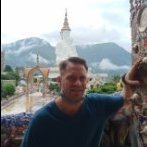In Mandalay, a Road to Ruin for City's Sculptors
-
Recently Browsing 0 members
- No registered users viewing this page.
-
Topics
-
-
Popular Contributors
-
-
Latest posts...
-
13
THAILAND LIVE Thailand Live Monday 25 August 2025
Pattaya Chinese Neighbourhood Brawl Over Crab Delivery Picture courtesy of Matichon A dispute over a wrongly delivered seafood order escalated into a violent brawl in Pattaya, leaving two men hospitalised and police hunting several suspects. Full story:https://aseannow.com/topic/1370840-pattaya-chinese-neighbourhood-brawl-over-crab-delivery/ -
0
Crime Pattaya Chinese Neighbourhood Brawl Over Crab Delivery
Picture courtesy of Matichon A dispute over a wrongly delivered seafood order escalated into a violent brawl in Pattaya, leaving two men hospitalised and police hunting several suspects. The incident unfolded on the evening of 22 August inside a gated community on Soi Khao Talo, Nong Prue, Bang Lamung district, after a 4,000-baht order of steamed crab was mistakenly delivered to the wrong address and eaten by unsuspecting neighbours. CCTV footage shows nearly ten people storming into the residence and attacking its occupants. The victims have been identified as a 34-year-old Chinese-Cambodian tenant and his gardener, whose nationality has not yet been confirmed. Both remain in hospital with serious injuries. Police say the dispute began when a Chinese woman in her 60s, the mother of the homeowner and known locally as “Ama”, ordered the expensive seafood via a Chinese restaurant app. When the meal failed to arrive, the restaurant confirmed it had already been delivered, to the wrong house. Ama went to the neighbouring property to inquire, only to be told bluntly: “We’ve eaten it, so what?” She then called her son, who arrived with a group of friends and relatives. The confrontation quickly spiralled into violence, with the group assaulting the tenant and his gardener before fleeing. On 24 August, one of the suspects, identified as 45-year-old Thai gardener Wanchai “Nok”, who worked for the Chinese family, surrendered to police. He admitted committing the assault, saying he had “acted out of anger” after hearing about the missing crab order. However, Deputy Superintendent Pol Lt Col Thana Wisetchai of Nong Prue Police Station said CCTV evidence clearly shows multiple attackers. Officers are now urging the other suspects, including the Chinese homeowner, to surrender and face charges. Authorities confirmed that all those involved will be prosecuted under the law. Adapted by Asean Now from Matichon 2025-08-25 -
9
-
1
-
1
Crime Drinking Session Turns Deadly After Music Dispute
Always killing for even small problems. -
1
Crime Boy 11, Suffers Severe Burns After Being Set Alight by Teen
Give the idiot "the third degree treatment"
-
-
Popular in The Pub







Recommended Posts
Create an account or sign in to comment
You need to be a member in order to leave a comment
Create an account
Sign up for a new account in our community. It's easy!
Register a new accountSign in
Already have an account? Sign in here.
Sign In Now